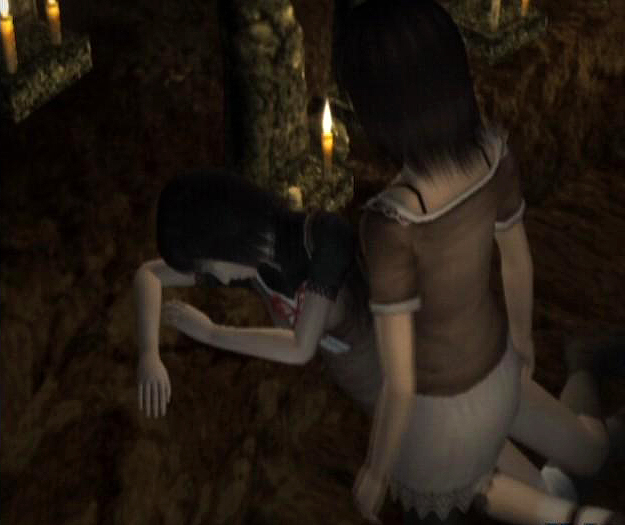

The player must explore the lost village from a third-perspective with fixed camera angles to uncover secrets, solve puzzles, and evade ghosts. The basic gameplay mechanics are largely identical to the first game. But before they're able to leave, Mayu disappears, and Mio must find her before they become the latest victims in an ancient sacrificial ritual involving twin sisters. Mio, who feels protective of her sister due to Mayu having suffered a childhood injury that's left her with a permanent limp, finds a Camera Obscura, and must use it to defend herself and her sister from ghosts that haunt the abandoned homes and other buildings. Twin sisters Mio and Mayu Amakura wander through the woods one day when they find themselves in a lost village. The game was later remade for the Nintendo Wii, but this version was only released in Japan and Europe. The game was first released for the Playstation 2 in 2003, and then for Xbox in 2004 as a Director's Cut version with exclusive content. With so many other horror games like Resident Evil 4 getting so much better at movement, it feels like this game is getting left behind.Fatal Frame II: Crimson Butterfly is the second game in the Fatal Frame (Project Zero in Europe, Zero in Japan) survival horror franchise. This is fine for lumbering about the game, but not so much when you’re trying to escape a ghost or grab a photo of a wiggly one. While the fixed camera angle does fairly well at avoiding getting stuck, but the character runs very slowly and isn’t very responsive to turning. Poor controls seem to be a part of the industry, but it’s a shame that Fatal Frame 3 doesn’t make any effort to improve on this.

You’ll need fast reflexes to get photos of some of these ghosts, allowing an element of skill to enter into the game. This gives you a reason to snap pictures of every ghost you see, even if they’re not necessarily related to the game. Taking a picture “exorcises” the ghost, and it’s possible to make the camera more efficient through upgrading it. One exciting feature of the game is the camera you will use to take pictures of the ghosts with. This also helps make the plot of Rei slipping back and forth between the dream world and the real world a bit more realistic. This takes an otherwise repetitive puzzle adventure with your average tile sliders, and makes it a little bit more unique and interesting. Two-World SystemĪn interesting new concept in the game requires you to move forward in both the dream world and the real world before you can advance in the game. You’ll need to use a mix of different characters to help you get through the game. Kei on the other hand, is larger and can move objects the other characters can’t. As an example, Miku who is smaller than the other characters, can access locations they can’t. These characters offer different benefits. While Rei is the main character in this story, you can also play Miku Hinasaki (a character from past Fatal Frame games) and Kei Amakura, the uncle of Rei’s departed boyfriend. 3 Controllable Charactersįatal Frame 3: The Tormented allows you to control 3 different characters, all of whom offer something valuable to the game. When she comes back to reality, she’s forever changed-and the game itself begins.

The shock sends her into a dreamlike state where she finds herself surrounded by ghost people. This shock becomes an even bigger one when she comes face to face with her now ghost boyfriend in a haunted house she is photographing. The game also has a second title Fatal Frame III: The Tormented. In this story, Rei Kurosawa is recovering from the unexpexted loss of her boyfriend, who died in a car crash while she was driving. Horror fans will want to take a look at Fatal Frame 3: The Tormented: A classic haunted house style horror game featuring Rei Kurosawa.


 0 kommentar(er)
0 kommentar(er)
